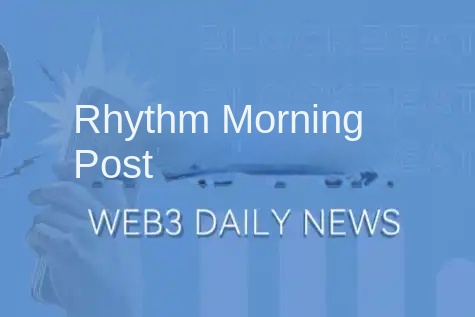Bankless: Who will break the game in the new Stablecoin fight and what will be the impact on the market and DeFi?
原文标题:《 Bankless:新稳定币战争——加密稳定币的草莽时代 》
Original article by Ben Giove, Bankless
Kate, Marsbit
A new application-specific stablecoin could be just what DeFi needs.
The DeFi agreement is taking action.
As commissions from fee-based business models decline and on-chain activities dry up, Blue Chip DeFi agreements are looking to build alternative revenue streams to diversify and strengthen their agreements.
We are already seeing early signs of this expansion, with Frax building liquidity pledge and lending products, Ribbon developing options trading platforms, and Maker entering the lending space with the Spark Protocol.
Now we have a new form of diversification in the form of application-specific stabecoins, which refers to stabecoins issued by the DeFi protocol as their secondary product, rather than their primary product.
These stablecoins are usually issued as credits, and users can borrow their assets directly in the lending market or through DEX to mint stablecoins. Agreements can earn income from them in various ways, such as through interest on borrowings, issuing/redeeming new units, peg arbitrage and/or unwinding positions.
As we know, the stablecoin space is huge. There are currently $145 billion of stablecoins in the crypto ecosystem, with a potential market of trillions of dollars in the future.

Total Stablecoin supply, source: The Block
As regulators target centralised, fait-backed stablecoins such as BUSDs, the DeFi protocol could open a window not only to diversify its business model but also to steal a slice of market share.
Many will point to DAI and FRAX as the most likely candidates to take a bite out of USDC and USDT, but could some application-specific stablecoins be disruptive?
What impact will this trend have on the market and DeFi? Let's find out!
GHO and crvUSD
The two most famous protocols that launched stablecoins were Aave and Curve, which issued GHO and crvUSD, respectively. Let's take a quick look at how these stablecoins work.
GHO
GHO is a decentralized stablecoin issued by Aave. GHO is over-collateralized because it is backed by deposits from Aave V3 and users can mint stablecoins directly in the money market.
The GHO is unique in that, unlike other assets in Aave, its interest rate is determined by an algorithm, and its borrowing rate will be manually set by the governance. This gives Aave complete control over the cost of casting/borrowing GHO, thus making it possible for DAO to undercut its competitors (more on that later).

GHO Design - Source: GHO Docs
In the future, in addition to Aave V3, GHOs can be minted from other sites through whitelist entities called Facilitators. These facilitators can mint GHOs based on various types of collateral, including delta-neutral positions and real world assets.
我们以前见过类似的稳定币设计,比如 Frax 的借贷 AMO 和 Maker 的 D3M。但 GHO 的增长前景非常强劲,这得益于 Aave 的内置用户基础、品牌、团队的业务开发技能,以及价值 1.309 亿美元的庞大 DAO 资金库 (尽管其中大部分是 AAVE Token )。
GHO is currently available on Goerli Beta and is scheduled to launch later in 2023.
crvUSD:
crvUSD is a decentralized stablecoin issued by Curve. Many details about Stablecoin are being kept under lock and key, but we do know that crvUSD will utilize a new mechanism called the Loan Clearing AMM Algorithm (LLAMA).
LLAMA has adopted a "friendlier" clearing design that swaps users' collateral for crvUSD over time as the value of the collateral declines, rather than liquidating the user's position completely at once.

crvUSD Design - Source: Curve Stablecoin White Paper
All in all, LLAMA should help significantly reduce punitive liquidation, and this improved user experience for borrowers is likely to increase the appeal of CrVUSd-denominated CDPs.
关于支持的抵押品类型和 crvUSD 在生态系统中的作用的细节很少,但稳定币很可能会由 Curve 池的 LP Token 铸造。这将有助于提高在平台上提供流动性的资本效率,因为 LP 也可以通过将他们的 crvUSD 部署到 DeFi 中获利。
crvUSD should also benefit from Curve's metering system, which is used to distribute CRV releases and, by doing so, to distribute DEX liquidity. It is quite possible that some of this release will be allocated to the crvUSD pool, or that crvUSD will become part of other stablecoin base pairs, thus helping it easily build deep liquidity.
Impact on the market:
Now that we've looked at the status of application-specific stablecoins, let's delve into the impact this will have on the market.
Increased (theoretical) revenue from issuing DAOs
The party most directly affected by application-specific stablecoins is the issuing protocol itself. In theory, creating stablecoins could strengthen the business model of issuing agreements, as it provides them with an additional revenue stream.
Currently, agreements like Curve and Aave rely on transaction fees and interest on loans based on utilization, respectively. The low-quality nature of these revenue streams has become apparent during this bear market, as fees have compressed due to increased competition, reduced trading and lending activity, and led to a sharp decline in revenue.
The release of stablecoins within the agreement changes this dynamic, as the agreement will now be able to access an additional revenue stream to boost its revenue. Although interest income is still cyclical, as it depends on borrowing needs, it is generated more efficiently (i.e. TVL has a higher return) relative to transaction fees or spreads in the money markets.
While this interest income is likely to be subject to similar fee compression (more on that later), in theory it still has the potential to diversify the income mix and strengthen the moat of the underlying agreements through other means (such as foundry/redemption fees, hook arbitrage and clearing).
*潜在* Token 持有者的价值收益
从特定于应用程序的稳定币热潮中受益的另一方是发行协议的 Token 持有者。
虽然这取决于每个单独的协议,但任何收入分成都将增加持有或锁定 Token 的持有者可以获得的收益。
在熊市中,我们已经看到 GMX 和 GNS 等收益分享资产表现出色,发行稳定币,然后与持有人分享收入,将使他们的 Token 更具吸引力,这样做会增加他们跑赢大市的几率。
For example, Curve will likely share crvUSD revenue with veCRV lockers, which means lockers will get their share of transaction fees, governance bribes, and now stablecoin-based cash flow.
考虑到这种方法存在的监管风险,发行协议也有可能以其他方式为其 Token 增加效用。例如,AAVE 的质押者将能够以相对于平台上的其他用户的折扣价借入 GHO。
Bribery and liquidity fragmentation
One of the most critical factors in stablecoin's success is its deep liquidity. Liquidity is the lifeblood of any stablecoin -- not only does it enable low-slip trading, but it also helps facilitate consolidation, as liquidity is needed for lending platforms to clear and secure valuable infrastructure such as ChainLink Prophecy machines.
The need for liquidity for specific applications of stablecoins may help support the governance bribery market.
在 Curve 战争推动下,稳定币发行人可以通过贿赂或向Token持有者支付,在 Curve 和 Balancer 等去中心化交易平台为其 Token 建立流动性,以确保他们对将释放量定向到选定池的投票。
通过贿赂,发行者能够在需要的基础上租用所需场所的流动性。大量特定于应用程序的稳定币可能会导致更多的 DAO 玩这个游戏,并贿赂这些 Token 持有者。
This, in turn, should increase earnings for the lockers of CRV and BAL as well as CVX and AURA, who control the majority of releases on Curve and Balancer, respectively, through meta-governance and receive the majority of bribes.
Another beneficiary of this bribery boom has been the markets that facilitate these transactions, such as Cartel "s Hidden Hand and Votium.
However, this bribery will impose costs on end users in the form of liquidity fragmentation. In a cryptocurrency market with few signs of inflows, liquidity could become more dispersed among the various stablecoins, leading to poorer execution by whale traders.
Credit boom
The growth of application-specific stablecoins could also catalyze the DeFi credit boom by leading to a surge in low borrowing rates.
To compete with existing stablecoins such as USDC, USDT, DAI, and FRAX, stablecoins such as Aave and Curve may have to offer GHOs and crvUSD at low borrowing rates to entice users to create new units to increase their circulating supply.
In theory, this low-ration-driven credit boom could spur widespread development of DeFi and crypto markets, with both income farmers and degens able to borrow at incredibly low rates. It could also open up interesting Crypto TradFi arbitrage opportunities, as users might be able to borrow Stablecoins at rates well below those paid by US Treasuries.
We are already seeing early signs of an adjustment to this new paradigm by stablecoin issuers such as Maker, which will offer DAI borrowings at a 1% DAI savings rate (DSR) via Spark (Maker controlled Aave V3 fork).
While this reduction in borrowing rates could hurt the bottom line of issuance agreements such as Aave and Curve, it could help satisfy a market desperate for credit after the collapse of CeFi lenders in 2022. With interest rates significantly higher than DSRS and possible borrowing rates for stablecoins such as GHO, cryptocurrencies will become one of the cheapest credit markets in the world.
DeFi's wildcat era
Wildcat banking was the period in American history when banks issued their own currency. As we said, DeFi is accelerating the history of finance, and with stablecoins like GHO and crvUSD, it seems poised to start on a similar trajectory.
While they are unlikely to overtake more well-positioned incumbents such as DAI and FRAX, GHO and crvUSD benefit from the integration of their publishing agreements and can carve out a niche.
虽然从理论上讲,这些稳定币将有助于加强发行者的商业模式,并为 Token 持有者增加价值,但由于「逐底竞争」,它们不太可能这样做,在这种情况下,发行者将在利率上相互削弱,以向借款人提供尽可能便宜的信贷。
As a result, these low rates are likely to catalyse a credit boom, stimulating the economy up the chain with cheap capital.
In a world where the cost of capital has risen sharply over the past year, this has the potential to position DeFi as one of the lowest-cost capital markets on earth, perhaps reigniting interest and leading to inflows into the ecosystem.
Original link
Welcome to join the official BlockBeats community:
Telegram Subscription Group: https://t.me/theblockbeats
Telegram Discussion Group: https://t.me/BlockBeats_App
Official Twitter Account: https://twitter.com/BlockBeatsAsia


 Forum
Forum Finance
Finance
 Specials
Specials
 On-chain Eco
On-chain Eco
 Entry
Entry
 Podcasts
Podcasts
 Activities
Activities
 OPRR
OPRR









